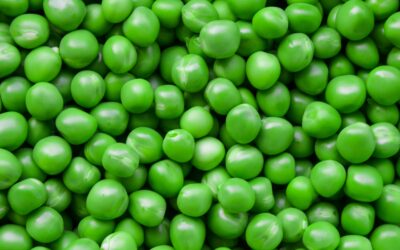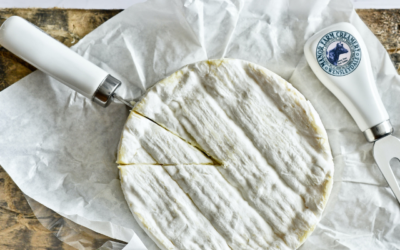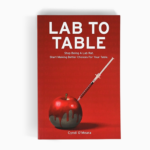I received an interesting question last week about yeast extract and MSG, so I thought I’d share the question with you all – and my response.
“Hi Cyndi,
We were most interested in the newspaper article quoting you in the Brisbane Courier Mail (Saturday July 25), headed “Sneaky Food Label Scam” and which says “Yeast extract … hidden form of MSG found in some spreads, soups, dips, chips, microwave dinners”.
Our question is, how are we to interpret packaging on the Sakata Seaweed rice crackers in our home, which list Yeast Extract in their ingredients but also declare “No added MSG” along with other claims on the packet. Is this an exception to your ‘rule’ or is this company being less than honest with its claims?
Thanking you in anticipation,
Deb & Kev”
Hi Deb and Kev.
Brilliant question. First of all, there is a little background information that is required to understand the labelling and no MSG added on Sakata Seaweed Rice Crackers.
Sakata was bought out by Smith’s, which is a subsidiary of PepsiCo, a large corporation that in my opinion puts dubious ingredients in their products. I always look at a company across the board as to whether I trust them or not and whether I want to purchase their products. If I feel they use ingredients that are unethical then I try not to buy from them at all. I look for companies and people I can trust to purchase my foods from. And if it means I can’t purchase any rice crackers then so be it.
Sakata changes their ingredients all the time, so much so that when I called the company the person I spoke to in customer service said she didn’t know why they put the ingredients on the website as the ingredients are forever changing on their range (all Smith’s foods, including Sakata).
The ingredients on the website state that Seaweed Sakata Rice Crackers are as follows:
RICE FLOUR, SOY SAUCE (SOYBEAN, WHEAT FLOUR, SALT), SUGAR, DRIED SEAWEED, CANOLA OIL.
But when I called the company and asked for the ingredients I was given the following:
RICE 88%, SOYA SAUCE (SOY, WHEAT, SALT) SUGAR, YEAST EXTRACT, DRIED SEAWEED, DEXTROSE, NATURAL COLOUR (CARAMEL), SALT, NATURAL FLAVOUR, CANOLA OIL.
This is vastly different to what is on the website.
I was told by customer service that at first they had no MSG in the Seaweed Sakata Rice Crackers then they added it and then they took it out due to customer demand. She assured me there was no MSG, but her knowledge of Yeast Extract was dismal.
I then went onto the website for more information about their health policies and this is what I read:
It’s PepsiCo’s promise to encourage people to live healthier by offering a portfolio of both enjoyable and wholesome products, as well as helping people to make informed product choices.
Not so sure that their Sakata seaweed product helps people who have issues with additives, colours and glutamates to live healthier or make informed product decisions.
I look at the ingredients on the package of this product and I personally would never eat this food.
Why?
Yeast extract.
What does this mean?
Yeast extract is produced by a number of step by step processes, the main one being that the yeast is killed, the cell wall broken down and discarded and enzymes then break the protein bonds to make free amino acids. Glutamic acid (a free amino acid) is produced which is a glutamate that is free from other molecules. And whether it is 7.5% or 75% free glutamate, it can avoid the MSG labelling while delivering high doses of glutamic acid or free glutamate in each bite of food flavoured with enhanced flavouring additives. Free glutamate or glutamic acid, if less than 75% of an additive, doesn’t have to be labelled MSG. The MSG term won’t be on the label as it pushes concerned consumers away.
The US Food and Drug Administration (FDA) require products that contain MSG to state this on the label. Foods that contain yeast extract don’t need to specify that they contain MSG. However, they can’t claim to contain “No MSG” but they can use the term “no MSG added”. This is the same in Australia and New Zealand.
In nature glutamates are not free but bound and found in smaller amounts and are relatively benign. Using flavours, additives and yeast extracts are less expensive than expensive oils, herbs and spices. You can imagine what a rice cracker with seaweed and vegetable oil would taste like (probably bland).
Free glutamates excite the brain’s cells into making you believe the flavour is in the food and not just in your head.
Some processed natural foods with additives containing free glutamates, such as yeast extracts, claim “no added MSG” which is technically accurate but very deceptive.
Whether free glutamates are an issue in your health is something that only you will know. Some people are dramatically affected by free glutamates while others not so much. Glutamates excite the nervous system, which is the neural tree that reaches every part of your body, meaning that symptoms of reaction to free glutamates can be as far reaching as a migraine to itchy skin, flushed red skin or hyperactivity.
Names of ingredients that always contain processed free glutamic acid:
Any “hydrolyzed protein”
Anything containing “enzymes”
Anything containing “protease”
Anything “enzyme modified”
Anything “fermented”
Anything “hydrolyzed”
Anything “protein fortified”
Anything “protein”
Autolyzed yeast
Calcium caseinate
Calcium glutamate (E 623)
Gelatin
Glutamate (E 620)
Glutamic acid (E 620)
Magnesium glutamate (E 625)
Monoammonium glutamate (E 624)
Monopotassium glutamate (E 622)
Monosodium glutamate (E 621)
Natrium glutamate
Sodium caseinate
Soy protein
Soy protein concentrate
Soy protein isolate
Soy sauce
Soy sauce extract
Textured protein
Torula yeast
Whey protein
Whey protein concentrate
Whey protein isolate
Yeast extract
Yeast food
Yeast nutrient.
But it’s not just the yeast extract that I would be concerned about.
Another ingredient is dextrose, this is a wheat based sugar, and is produced through many industrial processes. It is a lot cheaper than sugar. I try to stay away from this wheat based sugar; I’d rather consume a sugar that is less refined and made naturally like rapadura sugar.
The salt also needs to be looked at it is probably refined with only sodium and chloride and probably an anticaking agent, devoid of the minerals that you find in natural seaweed salt.
Caramel colour – what is that exactly? It sounds natural, but there is nothing natural about it. Most people would interpret caramel colouring to mean coloured with caramel, but this has nothing to do with the caramel you make at home with sugar and butter, rather it is a concentrated dark brown mixture of chemicals that simply do not occur in nature. In contrast to the caramel you make at home this artificial brown colouring is made by reacting sugars with ammonia and sulphites under high pressure and temperatures. Chemical reactions result in the formation of 2 methylimidazole and 4 methylimidazole, which in government-conducted studies caused thyroid, liver, leukaemia or lung cancer in mice and rats. The National Institute of Environmental Health Sciences (NIEHS) in the US said there was clear evidence that both 2MI and 4MI are animal carcinogens. Chemicals that cause cancer in animals are considered to also pose a cancer threat to humans. Some natural caramel colours do not use ammonia in the process and have been indicated to be safer, but as there is no accurate labelling, you will never know what process has made your natural caramel colour.
Another dubious ingredient and name is ‘natural flavour’. It includes the following ingredients/chemicals: amyl acetate, amyl butyrate, amyl valerate, anethol, anisyl formate, benzyl acetate, benzyl isobutyrate, butyric acid, cinnamyl isobutyrate, cinnamyl valerate, cognac essential oil, diacetyl, dipropyl ketone, ethyl acetate, ethyl amylketone, ethyl butyrate, ethyl cinnamate, ethyl heptanoate, ethyl heptylate, ethyl lactate, ethyl methylphenylglycidate, ethyl nitrate, ethyl propionate, ethyl valerate, heliotropin, hydroxyphenyl-2-butanone (10 percent solution in alcohol), α-ionone, isobutyl anthranilate, isobutyl butyrate, lemon essential oil, maltol, 4-methylacetophenone, methyl anthranilate, methyl benzoate, methyl cinnamate, methyl heptine carbonate, methyl naphthyl ketone, methyl salicylate, mint essential oil, neroli essential oil, nerolin, neryl isobutyrate, orris butter, phenethyl alcohol, rose, rum ether, γ-undecalactone, vanillin, and solvent. This is not made by nature but rather made in a chemical laboratory. As they have not given the exact name of the flavor it’s hard to know the exact ingredients as they alter slightly depending on the flavour needed.
Canola oil – it doesn’t say it is organic so I’ll assume genetically modified which is probably round up ready and probably has traces of glyphosate, something that destroys your microbiome’s ability to function. Current studies show us the importance of our microbiome for health.
I’ve gotten to the point that I don’t buy foods in a package – I make many of my foods from scratch and if I eat out, I make sure I know the chef and his philosophy around food.
Hope this helps.
Happy changing habits,
Cyndi
PS: Here is a really interesting read: ‘Avoiding MSG? Try memorising the 129 terms food companies prefer to use’ was published on goodfood.com.au on 7 August 2015







Hi, thanks for the information but what “nutritional yeast” flakes?
Hi Anna,
Nutritional yeast flakes don’t contain any MSG to our knowledge.
Is there somewhere that we can complain to Sakata.. as in a petition or something? It’s not ok that they are not listing everything. What about allergies.. this is crazy. I won’t be buying their products again.
Hi Megan,
I completely agree, it’s very frustrating! Perhaps you could try contacting the company directly, I don’t know of any petitions going around (or you could try creating your own?)
Hi. I read your book around 10 years ago and it was ok.
The thing I didn’t like is you go on about how you have never been sick or had antibiotics. Now I see this article and you are still going on about it.
My middle daughter was diagnosed with severe eczema and asthma when she was 2 years old. Due to the itching, staff infections develop. She has been on antibiotics many times. We have tried nutritionists and other natural therapies, to no avail. She is now 10years old. Just because you have good genes and have had a healthy life doesn’t make you an expert.
Hi Brett,
It’s so wonderful to hear you have attempted natural therapies and I hope you don’t give up on it completely as it can be an incredible journey learning what works for your individual body. Cyndi in no way condemns people who have used modern medicine and does believe that they can have their place in the world, but she uses herself as an example of what good, clean, real food, movement and rest can achieve. We’re sorry you feel otherwise, but we understand each individual person is incredibly unique. If you are after some amazing reading material that may help with your daughter’s eczema, we cannot recommend Dr. Natasha Campbell McBride’s book ‘Gut and Psychology Syndrome’ enough. We also have numerous blogs (and recipes) on our website with information on gut health and healing if you’re interested in reading them. We wish you and your daughter all the best.
Thanks Brett for your email. I’m sorry to hear about your daughter and the problems she is having, I can hear your frustration and wanting to lash out, believe me I know what you are feeling as I have also experienced this with an adult child – but not going to medicine to heal her but rather using Kultured Wellness program, she is now 16 months later doing very well. Can I suggest you try the GAPS or Kultured Wellness Program they work wonders with skin issues.
Just to correct you regarding my good genes. – that’s laughable. A little back ground might help you appreciate my predicament.
Mother died of mesothelioma 69
Sister died of CREST 46
6 Uncles had haemophilia
1 cousin haemophilia
All my girl cousins have had IVF to have girls so that they don’t have boys with haemophila, but still the gene persists
1 cousin type 1 diabetes
1 cousin died from dysphagia
2 Aunts with Breast Cancer – one dead the other with severe anxiety
1 Aunt scoliosis
1 Aunt liver cancer – dead at 70
1 Uncle liver cancer – dead at 50
2 cousins with psychosis and schizophrenia
9 family members died from Immune deficiency syndrome I was diagnosed at 20 with suspected Von Willebrand disease, told to come back for more tests but decided that I had lived my life without knowing without problems and saw no benefit in clarification.
My mother was dosed heavily with arsenic and lead when it was sprayed on the corn fields of Iowa and then for 10 years was exposed to DDT.
And this is my Mothers immediate family and my immediate family
I don’t have the good genes you talk about my mothers family was decimated by the environment and epigenetics and a gene mutation that happened after the arsenic and lead was sprayed. My sister was never well, she was the first born, where much of the dumping of fat stored chemicals may have occurred. If only we knew then what we know now, she may and my mother may still be alive and for that matter so may many of my immediate relatives.
What I teach is how to improve your genetic potential buy using food (nutrigenetics) and the environment (epigenetics). You see food and the environment is not just about energy and building blocks, these factors talk to your genes and turn them on and off. Great book to read is Biology of Belief by Dr Bruce Lipton (geneticist)
There was one bit of luck in my life and that was having a father who was a pharmacist and saw in the 1950’s the tragedy of over medicating and not allowing the body to deal with pain and infection and inflammation. Of course when the pain is too much and the infection too much is when we go to emergency medicine. I was able to get through my child hood without medications, then when I became independent at 18, I didn’t drink, smoke, do drugs, I studied the art and science of prevention and that’s what I teach. It’s a whole lifestyle. My children were bought up the same as me and they too are free from medication despite their genetic potential.
In my way of thinking I’m pretty well versed in this topic and have been studying it for 33 years, so if you want my help in looking at the severe eczema your daughter has without using antibiotics which in turn destroys the gut microbiome and then a vicious cycle begins then I’m all ears. But if you are happy to insult me and my book (it was just OK), then that’s your prerogative, but now with more knowledge I’m hoping your understanding of my book and me may lead a path to helping your daughter, because after all this is what I believe your email to me was all about.
Sincerely
Cyndi
I get serious joint pain and swelling from msg yeast extract and any other preservatives I feel that labels are hiding the facts so that we will purchase these foods. I know that their are other people out there that have the same problem but do not know why.
Hi Barry. Thanks for sharing. You might also find this blog an interesting read: https://changinghabits.com.au/blog/2018/03/20/welcome-to-the-organic-natural-non-gmo-sustainable-ultra-processed-junk-food-revolution/
I just wanted to thank you for this. I just got diagnosed with IC. I’m desperately trying to eliminate my symptoms which may or may not work. Homemade soups were causing me issues. Yhings that did not have anything in them that should, and I found the broths/stocks I was using (organic ones even) had yeast extract. I’m trying to educate myself and stay clear of many ingredients, but finding good information is difficult. I find websites that are to help people with IC are giving out recipes to try and then putting ingredients like onions or broths with Swanson’s in (). Swanson’s has yeast extract. It makes life hard when there is just so much conflicting info. “This is good for you” from one site and then the same thing is bad for you in another. I liked your explanations, and it makes more sense. I hate how companies are allowed to do this.
Thank you for your kind words. We hope you can find some relief from your symptoms.